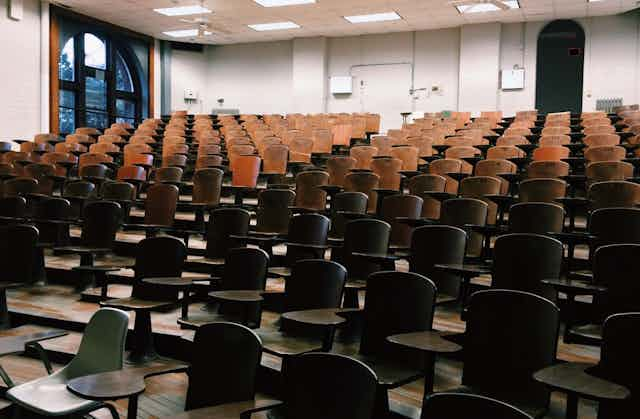The Australian Universities Accord is a major review of Australian universities.
Its proposals promise to have a huge impact on how Australia’s higher education system will function in years to come.
Education Minister Jason Clare has made equity a top priority for the accord. This means increasing opportunities for disadvantaged groups to attend university and finish their degrees.
In its interim report in July, the review panel suggested a “needs-based” funding model could be used for Australian universities, similar to what we have to determine school funding.
With a final accord report due in December, our new paper explores how this might work.
What is needs-based funding?
Australia currently has a needs-based model for schools. This was introduced as part of the “Gonski” reforms a decade ago and is called the “Schooling Resources Standard”.
This involves a base amount for every primary and high school student and then six equity loadings. The loadings provide more funds to schools and students who need more support, including students with disabilities, low English language proficiency, First Nations students, students with socio-educational disadvantage, students in regional and remote areas, and small schools.
The accord review panel said a needs-based model, similar to our current school one, has
potential benefits […] for learning and teaching in universities [which] takes into takes into account the costs of different courses and the socio-economic mix of students at each institution.
As our paper notes, research evidence shows resources do matter. Many studies have shown increases in per-student funding, when properly targeted, can lead to improved or higher student outcomes.
At the moment, university funding is primarily based on a student’s field of study. There are some extra funds for equity students, about A$360 million a year, but this is not a key feature of the system’s design.
How might it apply to universities?
In our paper we explored what would happen if a model similar the Schooling Resource Standard was introduced in Australian universities.
We found a needs-based funding model, using the same parameters as the Schooling Resource Standard, would see an overall 11% increase in base funding amounts to universities for government-funded students. We estimate this would mean about an extra A$1.3 billion per year in federal government funding.
Importantly, universities with large enrolments of students from low socioeconomic backgrounds would gain the most. Under our system, James Cook University, the University of New England and CQUniversity would receive more than a 30% increase in base funding. Charles Darwin University and Charles Sturt University would gain more than 20% in base funding.
The University of Canberra, University of Melbourne and Australian National University, the University of Notre Dame and University of Sydney would stand to gain the least, with an increase of 5–6% in base funding.
This extra funding would specifically help universities counter disadvantage by meeting extra learning needs and providing extra support to help students finish their courses.
We know universities with a higher proportion of students from low socioeconomic backgrounds have poorer completion rates.
Could international student fees make university funding more equal?
A needs-based model could also help with other policy challenges.
The interim report has already suggested a levy on lucrative international student fees. The idea is universities would pay some of the fees they receive from international students into a central fund managed by the government.
As we have noted before, prestigious metropolitan universities tend to attract far more international students than other universities.
The idea of a levy has been criticised by researchers as complicated and risky.
But a needs-based model could help. International student income could be used to adjust funding to universities using a concept like the “capacity to contribute” mechanism in the school sector.
For private schools, a “capacity to contribute” score is calculated using parents’ income. This means independent schools with more advantaged students receive less funding from the government. These schools typically charge higher fees to families.
This model could be applied in higher education so universities with higher international student revenue relative to domestic student revenue receive less government funding.
Remaining questions
In our report, we find a needs-based model is promising. But significant questions remain:
how should equity be measured within each loading category, and what should be the relative weighting of funding for each group?
what should students contribute in a needs-based funding model?
what formula should we use for a “capacity to contribute” measure?
Could there be a needs-based funding model that doesn’t increase overall funding?
Our research also found needs-based funding models are very technical. Much more work is required to make sure it would be appropriate for Australia’s higher education sector.
The Universities Accord was right to identify needs-based funding as a policy direction, but it is only the first step towards a new model.

